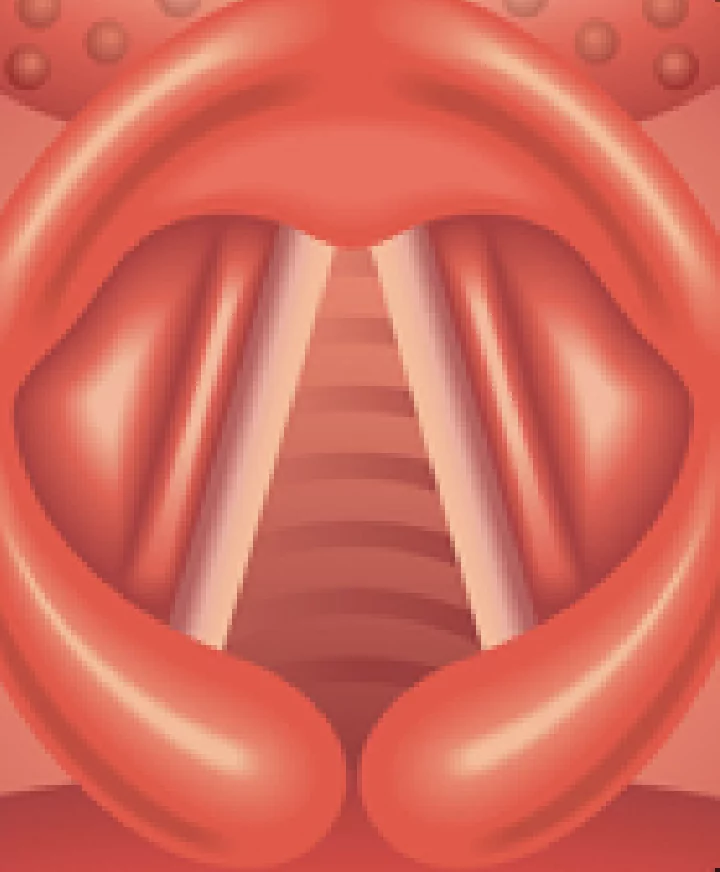High notes are incredibly exciting and get the most attention, but beautifully vibrant low notes add color, depth, and variety to your singing. Think of Adele without her wonderful low chest voice.
Extending vocal ranges is the goal of most singers. Although we tend to focus on the high notes, you should also boost your lower range.
The good news is, adding low notes to your range is more straightforward than adding high notes. It often takes a few simple adjustments to extend your lowest note with a balanced voice.
If you want to get started finding low notes right away, watch this video for exercises and tips.
The Quickest Way to Extend Your RANGE
High notes are difficult for a couple of reasons. First, they require a balance of muscles to get your vocal cords to stretch and thin out.
Acoustics are difficult to align. The sound waves coming from your vocal cords interact with the resonators of your throat and mouth in ways that can either make the note easier or harder to sing with balanced vocal tone.
While these factors also come into play in low notes, they are much easier to control. Making small adjustments (particularly in the acoustics of the voice) can add vibrant low notes to your range quickly.
Get My Best Vocal Warmups for FREE!
In this free course I will show you the scientifically proven method of warming up your voice with a common straw.
Get amazing vocal breakthroughs with this simple method. Sign up by clicking below.
HOW LOW NOTES WORK
While your voice range is ultimately limited by what you have been given by nature, the average voice is still capable of an impressive amount of range. But not only that, you are capable of accessing beautiful tones and more vocal resonance when singing with proper technique.
You are likely not even close to reaching your maximum range and expanse of note potential, both in the upper and lower parts of your singing voice.
While singing higher is a more involved process, we can go on low notes right away.
First, a bit about how your voice works when singing lower and why you may be having difficulty… common issues include:
Not enough vocal cord closure
Using too much air
Improper resonance
Let’s look at how to improve these issues.
GET YOUR VOCAL CORDS FAT
Your vocal cords work like stretching and plucking a rubber band. The more you stretch and add tension to the rubber band, the higher the resulting pitch. For low notes, we want our vocal cords to be shorter and fatter, like an unstretched rubber band.
The Vocal Cords
However, when we have less stretching of our vocal cords (when singing low notes), we often let go too much, causing the vocal cords to come together without enough intensity. This lack of vocal cord closure causes a weak and breathy sound.
While a breathy sound can be acceptable for certain musical situations, it becomes a problem when the music calls for more intensity or color. We also lose out on additional lower notes, limiting our vocal range.
FINDING LOW NOTE RESONANCE
The lower part of a singer’s range is often called the “ chest voice .” When singing deep notes, we will feel the note vibrate or resonate in our chest. Similarly, higher notes tend to vibrate more in the head and are called “ head voice. While our vocal cords are not located in the chest (or head), these sympathetic vibrations are essential guideposts for the singer.
We use these sensations of resonance to help adjust our throat and mouth cavities to align with the sound waves optimally.
If your voice sounds dull and lifeless when singing low notes, it is likely an issue of resonance.
The good news is, we can adjust vocal resonance quickly, especially for lower notes.
Vocal Energy
The vocal cords close over and compress the air molecules coming up from your lungs to make sound. The vocal cords then pop open and release the compressed air, which begins vibrating – the molecules colliding to and fro.
These vibrating molecules then enter the throat and mouth resonators and are filtered and enhanced. This is where vowels and resonance come into play.
If we adjust our resonators appropriately, we will achieve our desired vocal tone. If our resonators are improperly adjusted, we can expect a host of vocal issues, including poor tone, instability, cracking, strain, croaky sound, and more.
While vowel tuning concepts can get quite deep, the vowel adjustments for low notes are relatively simple.
Low notes vibrate slower than high notes and therefore tend to have less acoustic energy. This is why the deeper sound can often sound dull and weak.
We want to increase efficient resonance and the acoustic energy of our low notes without resorting to straining or forcing.
Increasing this energy is best done by adjusting our resonators to bring out the more vibrant parts of the sound waves.
Think of your vocal resonators like an EQ system; you can take a song and make it sound very different by boosting the highs, mids, or lows.
Our resonators work the same way. By adjusting our throat and mouth, we boost different parts of the sound wave. The key to low notes is to boost the higher parts of the sound wave with brighter sounding vowels.
What do I mean by this?
Say the word BOOT followed by the word BAT. Now move back and forth between the vowel sounds of OO and AH. Do you hear the colors change from dark to bright?
Put your finger on your larynx (your Adam’s Apple). Move from OO to AH and feel the position of the larynx – does it change? You will likely feel the larynx lower on OO and higher on AH.
A higher larynx shortens the vocal tract (the length of the “tube” from your vocal cords to your lips. This brings out the higher, brighter parts of the sound wave and gives the note more energy.
On a side note: this energy boost from brighter vowels can be too much on high notes, but that is for another post.
The key to finding acoustic energy and better tone on low notes is to modify your vowels to be brighter.
Low Note Exercises
Let’s return to the AH of BAT. We are going to use this sound to help establish your chest voice and solidify your low notes.
I want you to take the vocal posture of warning a small child – AH, AH, AH Now, take this sound and attitude on the following five-note scale “5-5-5-4-3-2-1”. You should feel more energy in your lower voice.
Moving to Other Vowels
Now let’s move from this bright AH to other vowels, keeping the intensity.
AH-UH AH-OH AH-OO AH-EE
Song Application
Now let’s try this brighter vocal posture on the opening of The Star-Spangled Banner. The opening notes often fall apart because the larynx is too low, and the vowels are too dull.
While keeping the AH posture, sing, “Oh, say.” Now sing this as an exercise.
Keeping this feeling of saying AH throughout the opening line will create more energy by boosting the sound waves’ higher frequencies. This energy should enable you to feel more balanced and secure on the lower notes and extend your range in the lower register.
The brighter sounds’ energy will also reflect down to your vocal cords, helping them resist the air more efficiently.
The increased vocal cord resistance creates more powerful sound waves, which are then energized by the bright vowels, creating a vocal energy loop and more of a rich tone.
This loop of energy makes singing easier and will give you an improved tone.
It’s a real WIN-WIN!
In Conclusion
You can quickly add range and improve your tone by working on your lower register, and when using proper technique, a bass note can be a very pleasing tonal quality.
Adding notes to your lower range is more straightforward than adding high notes, and these low tones can create compelling and exciting vocal performances.
Low notes often suffer from a lack of vocal fold resistance and low acoustic energy. By “brightening” the vowels and increasing your vocal cords’ resistance to the air, your low notes will grow in energy, and you will be able to access lower notes in your voice range.
Give the lower end of your range some attention, and with even a little bit extra daily practice, you will be quickly rewarded for your efforts.
P.S. If you’d like to improve your singing, check out my book, Beginning Singing.
It includes a bonus online members’ area with video lessons and recorded exercises.


